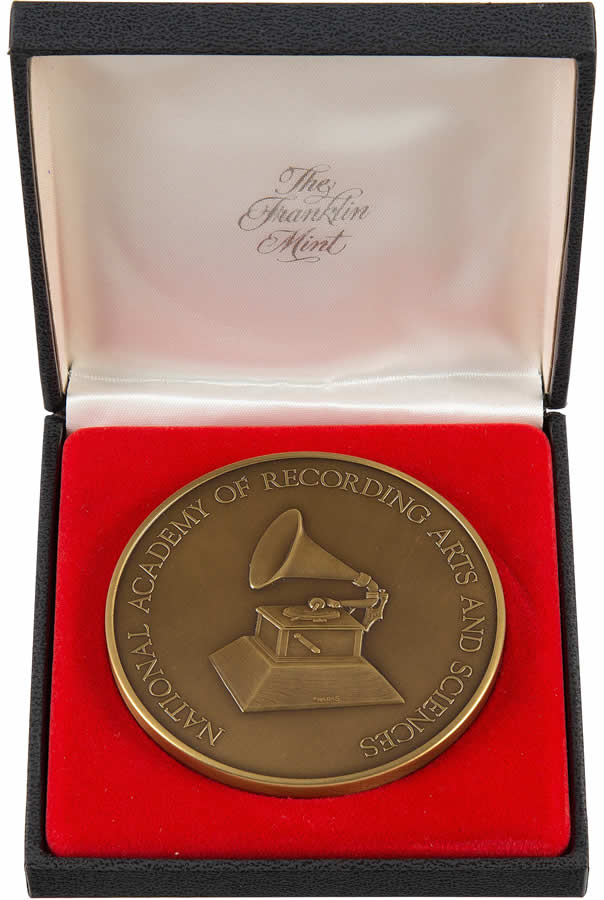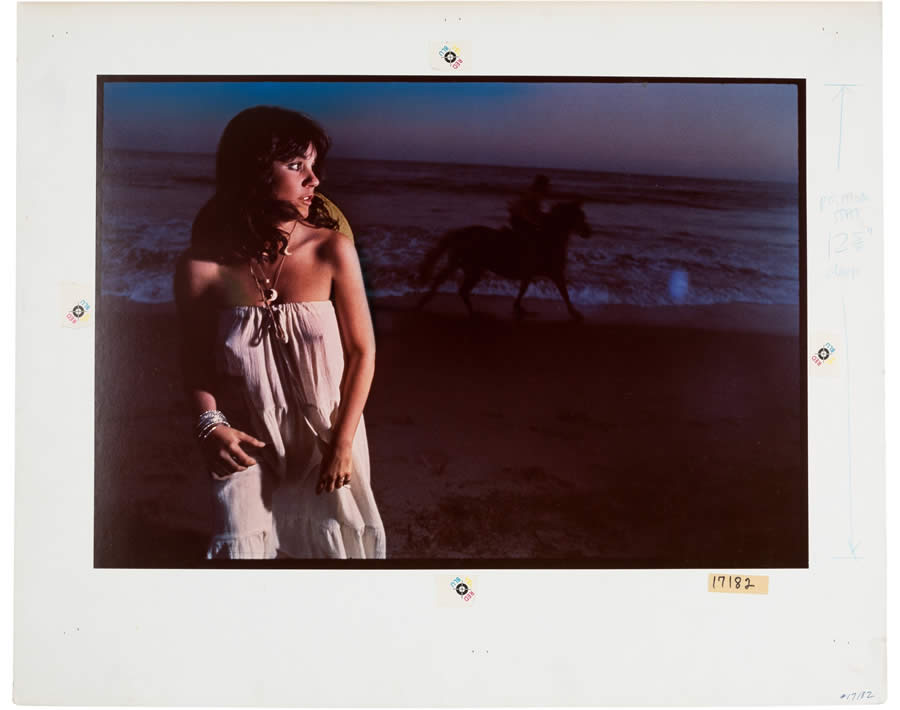LEGENDARY ARTIST SHARED INSTRUMENT WITH SOME OF MUSIC’S BIGGEST NAMES
By Robert Wilonsky
To list the players of this piano is to enumerate some of the last century’s most vital writers of songs and essential makers of music.
To begin: Elton John, Ray Charles, James Taylor, Joni Mitchell, Randy Newman, Jimmy Webb, Jackson Browne, Nelson Riddle, Carole King, J.D. Souther, members of the Eagles.
EVENT
ENTERTAINMENT & MUSIC MEMORABILIA SIGNATURE® AUCTION 7221
Aug. 8-9, 2020
Live: Dallas
Online: HA.com/7221a
INQUIRIES
Garry Shrum
214.409.1585
GarryS@HA.com
Which is to say nothing of the Yamaha Grand’s original buyer and previous owner, Peter Asher, the pop star-turned-Grammy-winning producer and manager; or of its current keeper, Linda Ronstadt, the Rock and Roll Hall of Famer who, as The New York Times recently put it, “sang every kind of song that’s ever been made” and did it with as much truth and beauty as anyone.
Ronstadt wanted the piano mostly because of its relatively compact size – about five feet, a Yamaha Grand not so grand as to overwhelm the San Francisco home that was smaller than her previous places. This is why she bought it almost 15 years ago: because Asher was closing the office and needed to sell the piano, and Ronstadt needed one.
But now it is her turn to sell the Yamaha, and other keepsakes, through Dallas-based Heritage Auctions during its Aug. 8-9 Entertainment & Music Memorabilia event. And as she prepares to part with the piano, to clear a little space from a cluttered home, Ronstadt and Asher regard it as nothing less than a “family heirloom.”
After all, Asher became her manager and producer in 1973, during the recording of Don’t Cry Now, her fourth album and the first to go gold. Then, in 1974, came Heart Like a Wheel; then, the acclaim and awards and ascension from star to icon. Ronstadt told Rolling Stone’s Cameron Crowe in 1976 that Asher was “the first person willing to work with me as an equal.”
She remembers this piano as the centerpiece of Asher’s offices around the corner from Los Angeles’ famed Troubadour, epicenter of the folk-rock scene of the 1970s.
“It was a great hangout with a lot of places to flop,” Ronstadt says of Asher’s digs on North Doheny Drive, more living room than meeting space with its long gray linen sectional and, occasionally, freshly baked chocolate chip cookies. Whenever Ronstadt would venture to West Hollywood from her Malibu digs, she found herself in Asher’s office.
And there she often would find Asher’s friends and clients rehearsing new songs or playing old favorites.
“Whoever was in town,” she says. “I can remember James Taylor rehearsing the songs from JT. Smokey Robinson. Joni Mitchell was a client for a while. Carole King played that piano – she was always around. Just an unending stream of musicians.”
Asher says so many songs we know by heart first came to life on that piano – not just the hits by the legends, but chart-toppers by the likes of Andrew Gold (“Lonely Boy”) and others.
“The piano played a vital role in transition from idea, from seed, from demo to finished arrangement,” says Asher, himself a British Invasion superstar as half of the duo Peter & Gordon. “I was always glad it went to Linda. I thought of it as remaining in the family. It’s a piano for an era, for sure.”
Even Ray Charles was among those to grace its keys: “We were talking about doing something, so he sat at the piano and played something,” Ronstadt recalls. “We discussed a project that never came off, maybe a duet.”
And she says it was at that piano that arranger and composer Nelson Riddle rehearsed with her the songs that ended up on her acclaimed trio of records featuring the Great American Songbook, beginning with 1983’s What’s New. Riddle, famous in the 1950s for his work with Nat King Cole and Frank Sinatra, would then head straight from Asher’s office to Musso & Frank Grill, where he lunched nearly every day.
Jimmy Webb, whose “Wichita Lineman” is a pop immortal, played frequently on that piano, often just for Ronstadt. So, too, Randy Newman, L.A.’s George Gershwin. Newman came by the house to preview songs from his 2017 studio record Dark Matter, which ends with the heartbreaking “Wandering Boy.”
“He always makes me cry,” Ronstadt says of Newman. “I can still hear them in my living room” – the musicians who sat at the keys, the songs they performed. “It’s hard to know if sound vibration gets trapped in surfaces. That’s why I am always careful about what happened in my house.” She laughs. “Don’t want those bad vibes.”
Her family, too, has performed for Linda on that piano – especially in recent years, after Parkinson’s disease forced her to retire from singing in 2009.
“They would play and sing for me,” she says, “after I couldn’t.”
Those moments transported her back to childhood Sunday mornings in Tucson, listening to her father Gilbert sing American standards. “Everything in the key of C,” she says of the man who occasionally performed in clubs and on radio. “It was nice to hear the piano being played in the other room. That meant there was life going on in the house.”
Even the piano itself isn’t just a piano: The Yamaha Grand was long ago bought from David L. Abell, for decades Los Angeles’ most important piano man operating out of a showroom on Beverly Boulevard. Everyone bought their pianos from Abell – Quincy Jones, Frank Sinatra, John Williams and the Eagles, to name but a few of the many. Asher bought it from Abell, “because he was the piano guy, and we loved him.”
Ronstadt is also selling the original album artwork that graced the cover of 1976’s Hasten Down the Wind, which garnered her the Best Female Pop Vocal Performance Grammy Award one year later – only her second of 13 Grammys. That’s a significant piece on its own: The photo was taken by Ethan Russell, the only photographer whose works have graced album covers from the Beatles, the Who and the Rolling Stones.
“Some artists inspire not just through their art but by the people they are,” Russell says on his website. “Linda Ronstadt is one of them.”
That famous photo, taken near her Malibu Colony home, happened completely by accident.
“The horse just ran by, and I was convinced the flash would scare the horse,” Ronstadt says. “It was also day-for-night lighting, which makes for an interesting picture. Whoever gets that is lucky.”
Ronstadt parts with the piano and photo now for the same reason she is selling a few other items, including the “In Appreciation” medallion given her at the 1985 Grammy Awards and other awards and plaques presented to her by publications over the decades.
Because she never had much care or concern for awards, as “she is above these things, while I am not that grown up,” Asher says. “She’s very sensible.”
And as she turns 74, it’s simply time to empty the house a little bit and let others own pieces of the memories.
“I did all of these things for myself,” she says. Others will want these items, Ronstadt says, because of their emotional connection to her work, or maybe to her.
“And I don’t have any argument with emotion. I have plenty of it myself,” she says. “A lot of history sat at that piano. I know because I lived every minute of it.”
ROBERT WILONSKY is a staff writer at Heritage Auctions.





